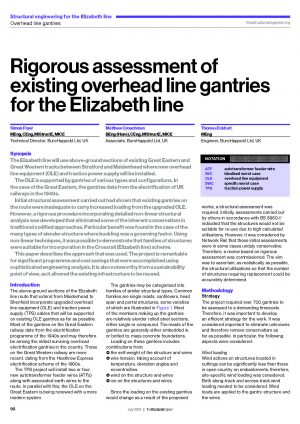The Elizabeth line will use above-ground sections of existing Great Eastern and Great Western tracks between Stratford and Maidenhead where new overhead line equipment (OLE) and traction power supply will be installed.
The OLE is supported by gantries of various types and configurations. In the case of the Great Eastern, the gantries date from the electrification of UK railways in the 1940s.
Initial structural assessment carried out had shown that existing gantries on the route were inadequate to carry increased loading from the upgraded OLE. However, a rigorous procedure incorporating detailed non-linear structural analysis was developed that eliminated some of the inherent conservatism in traditional codified approaches. Particular benefit was found in the case of the many types of slender structure where buckling was a governing factor. Using non-linear techniques, it was possible to demonstrate that families of structures were suitable for incorporation in the Crossrail (Elizabeth line) scheme.
This paper describes the approach that was used. The project is remarkable for significant programme and cost savings that were accomplished using sophisticated engineering analysis. It is also noteworthy from a sustainability point of view, as it allowed the existing infrastructure to be reused.


